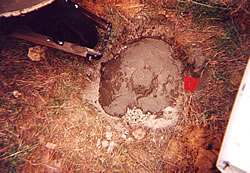Plugging Abandoned Water Wells
Texas Groundwater Resources are critical to meeting our future needs.
When is a Well Considered Abandoned?
How to take care of an abandoned well?
According to State law, a well is considered abandoned if it has not been used for six consecutive months.
However, a well can be considered to be in use in the following cases: A non-deteriorated well which contains the casing, pump, and pump column in good condition, or
A non-deteriorated well which has been capped
If you are uncertain whether your well is legally abandoned, call a licensed water well driller in your area, the Water Well Drillers Program of the TDLR, or the local groundwater conservation district (if one is present). click here for the form
An abandoned well can be fixed in three different methods.
The first method is to return the well to an operable state by making sure the casing, pump, and pump column are in good shape.
The next method is to cap the well in a manner to prevent surface water or contaminants from entering the well, having a cap that can support 400 pounds and making sure the cap cannot be easily removed by hand.
The third method is to plug the well from the bottom to the top with bentonite, bentonite grout or neat Portland cement.
What are the steps in plugging an abandoned well?
Step 1. Determine the size of the well. Measure the dimensions of the well. Measure the well diameter, depth, and water level. Accurate measurements (not estimates) will allow the correct calculation of the total well volume and the volume of water in the well. This information is needed to determine the material needed to plug the well.
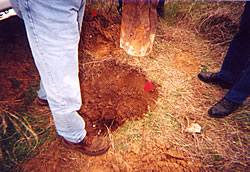
Step 2. Remove debris and obstructing materials from the well. It is critical that fill materials do not slump or settle; therefore, obstructions that may cause incomplete filling of the voids must be removed. Remove the pump, pump rods, pipes, and any other equipment from the well. Floating debris, such as wood staves, should also be removed.
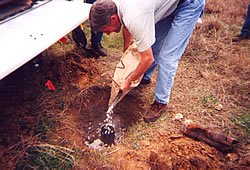
Step 3. Disinfect the well by adding household bleach. It is recommended that all wells containing standing water be disinfected to kill existing microorganisms. This can be accomplished by adding 1 gallon of chlorine bleach for every 500 gallons of water. This is equivalent to a “shock” chlorination concentration of 100 parts per million chlorines. The chlorination process ensures that disease-causing microorganisms are not sealed in the aquifer.
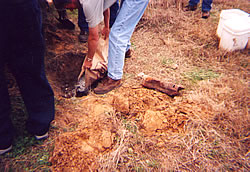
Step 4. Remove as much casing as possible. This will remove the conduit for carrying contaminants to the aquifer below.
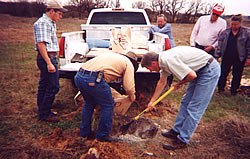
Step 5. Fill the well with plugging materials. The exact procedure for plugging will depend on well construction, depth, diameter, aquifer type, availability of materials, and the level of protection required. There are three different methods used to plug a well properly based on the well type (hand dug vs. drilled) and the amount of water standing within the well (standing water>100 feet vs.<100 feet).
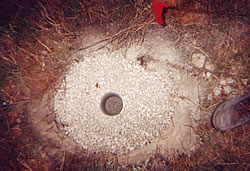
Step 6. Complete and mail a State plugging form to the Texas Department of Licensing and Regulation. Complete and mail a State plugging form to TDLR at the address indicated below. Comply with reporting and requirements of your local groundwater conservation district (if present). A state well plugging form can be downloaded from the TDLR website, www.license.state.tx.us.
